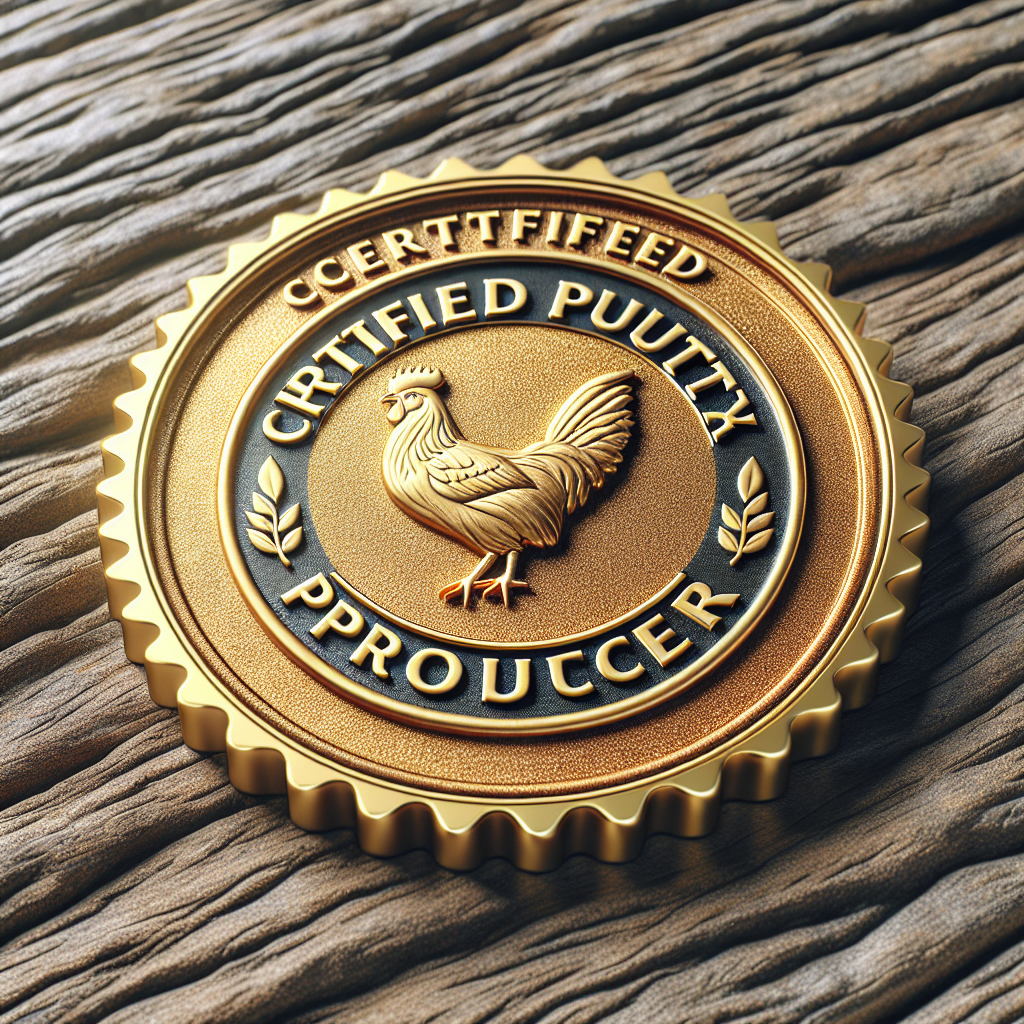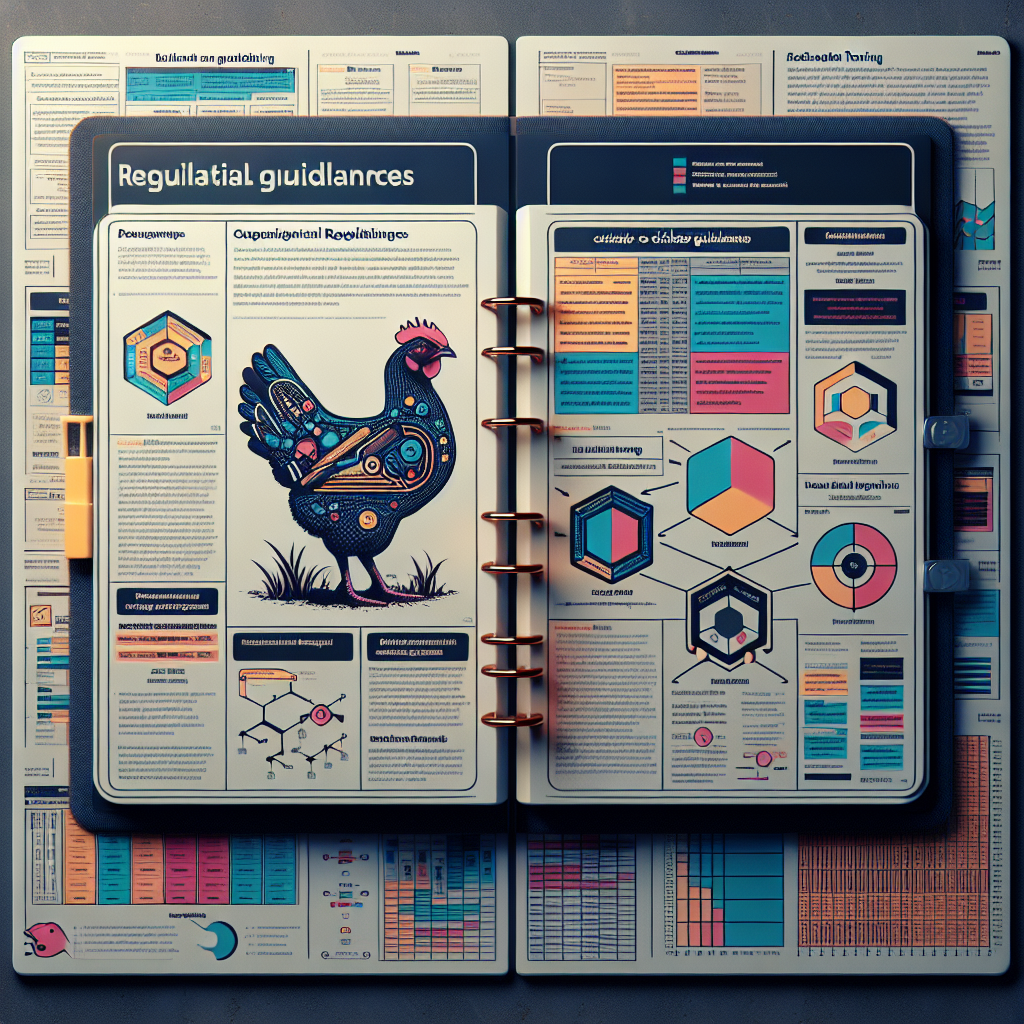Have you ever wondered how the regulations surrounding poultry farming stack up against those for other livestock? In this article, we will explore the similarities and differences in the general regulations governing poultry and other livestock. From animal welfare to biosecurity measures, we’ll delve into the various aspects that shape the guidelines that farmers must adhere to when raising poultry and other animals. So, whether you’re a poultry farmer or simply curious about the regulations surrounding livestock, this article will provide you with valuable insights into the comparative world of poultry regulations.
Definitions
Poultry
Poultry refers to domestic birds that are primarily raised for their meat or eggs. This category includes chickens, turkeys, ducks, geese, and quails. Poultry farming is a common practice worldwide due to the high demand for poultry products. These birds are typically housed in specialized facilities and require specific management practices to ensure their health, welfare, and productivity.
Other Livestock
The term “other livestock” encompasses various farm animals other than poultry. This category includes animals like cattle, pigs, sheep, goats, and horses, among others. Other livestock play a crucial role in agriculture, providing meat, milk, wool, and other products. The regulations governing these animals aim to ensure their well-being, prevent the spread of diseases, and maintain food safety standards.
Regulatory Bodies
Poultry
Poultry farming is regulated by various governmental and non-governmental organizations across different countries. In the United States, the United States Department of Agriculture (USDA) oversees poultry production and sets regulations related to food safety and inspection. Additionally, the Animal and Plant Health Inspection Service (APHIS) is responsible for preventing the spread of animal diseases. Other countries may have similar regulatory bodies governing poultry farming.
Other Livestock
The regulations for other livestock vary depending on the country and the specific animal involved. In the United States, the USDA plays a crucial role in regulating livestock production, including cattle, pigs, sheep, and goats. For example, the Food Safety and Inspection Service (FSIS) ensures the safety of meat products, while the Animal and Plant Health Inspection Service (APHIS) focuses on disease prevention and control. Similarly, other countries have their own regulatory bodies dedicated to overseeing other livestock farming practices.
Licensing and Registration
Poultry
Poultry farmers are required to obtain the necessary licenses and registrations to operate their farms legally. These requirements may vary depending on the country and the scale of the operation. In the United States, poultry farmers need to obtain a USDA-issued license if they engage in activities such as hatching, slaughter, or processing of poultry. Additionally, individual states may have their own licensing requirements. These licenses help ensure that poultry farmers meet specific standards related to food safety and animal welfare.
Other Livestock
Similar to poultry farming, livestock farmers also need to acquire the appropriate licenses and registrations. The requirements may differ for each type of livestock or country. Livestock farmers in the United States, for instance, need to comply with the regulations set by the USDA. Depending on the activity, licenses may be required for transportation, sale, or slaughter of livestock. These licenses help ensure that livestock farmers adhere to specific guidelines related to animal health, product safety, and environmental impact.
Housing and Space Requirements
Poultry
Poultry housing requirements are essential for the overall well-being and productivity of the birds. The specific regulations regarding poultry housing may vary depending on the country and the scale of the operation. In general, poultry must be provided with adequate space, ventilation, and temperature control to prevent overcrowding, disease transmission, and stress. Various housing systems, such as free-range or cage-free, may be allowed, depending on the regulations in place. These regulations aim to promote the welfare of the birds and ensure their access to sufficient resources.
Other Livestock
Housing and space requirements for other livestock vary depending on the species and the production system. Animals such as cattle, sheep, and goats are often provided with pasture or grazing areas to meet their nutritional needs. However, confinement or housing systems may be required in certain instances, such as intensive livestock operations. Regulations for housing and space take into account the animals’ size, behavior, and specific needs to ensure their well-being and prevent the spread of diseases.
Health and Welfare Standards
Poultry
The health and welfare of poultry are crucial aspects of poultry farming regulations. These regulations are designed to prevent the spread of diseases, ensure proper nutrition, and protect the birds from unnecessary suffering. Health standards may include regular veterinary checks, vaccination protocols, and biosecurity measures to minimize the risk of disease outbreaks. Welfare standards cover areas such as access to clean water, appropriate nutrition, and proper handling of the birds. By complying with these standards, poultry farmers can ensure the long-term health and productivity of their flocks.
Other Livestock
Similar to poultry, health and welfare standards are also paramount in the regulations for other livestock. Livestock farmers must provide appropriate nutrition, veterinary care, and housing conditions to maintain the health and well-being of their animals. Animal welfare standards encompass practices such as providing access to fresh water, appropriate housing, proper handling, and transportation. Additionally, regulations may govern the use of growth-promoting substances and antibiotics to ensure the safety of products derived from livestock.
Biosecurity Measures
Poultry
Biosecurity measures are critical in poultry farming to prevent the introduction and spread of diseases. These measures aim to protect the birds, the surrounding environment, and human health. Regulations may require poultry farmers to implement strict protocols, such as controlled access to farms, disinfection procedures, and separation of different age groups or flocks. Additionally, surveillance programs may be in place to detect and control potential disease outbreaks. By adhering to these biosecurity measures, poultry farmers can minimize the risks associated with disease transmission and safeguard the industry.
Other Livestock
Biosecurity measures are equally important in other livestock farming operations. The regulations for other livestock may include practices such as quarantine protocols, vaccination programs, and surveillance systems to prevent the spread of diseases. Livestock farmers may be required to implement measures to control access to the farm, sanitize equipment, and minimize contact with other animals. These biosecurity measures help safeguard the well-being of the animals, mitigate disease risks, and maintain the overall health of the livestock industry.
Transportation Regulations
Poultry
Transportation regulations govern the movement of poultry from farms to processing facilities or other destinations. These regulations aim to ensure the welfare of the birds during transit and maintain their health and safety. Poultry farmers and transporters may be required to follow specific protocols related to vehicle cleanliness, ventilation, and handling practices. Additionally, regulations may address issues such as journey duration, temperature control, and biosecurity measures to prevent disease transmission. By complying with transportation regulations, poultry farmers can minimize stress and reduce the risk of injury or disease during transit.
Other Livestock
Transporting other livestock also involves adherence to transportation regulations to ensure the animals’ welfare and safety. Livestock transporters may need to comply with regulations related to vehicle conditions, ventilation, and loading and unloading procedures. These regulations aim to prevent injury, stress, and disease transmission during transportation. Animal welfare considerations, such as journey duration, access to water and feed, and temperature control, may also be addressed in these regulations. By following transportation regulations, livestock farmers can protect the well-being of their animals and maintain the quality of their products.
Food Safety Standards
Poultry
Food safety is a significant concern in poultry farming, as poultry products are consumed by millions of people worldwide. Poultry regulations address various aspects of food safety, including processing, storage, labeling, and inspection. These regulations may require poultry farmers and processing facilities to maintain strict hygiene practices, implement Hazard Analysis and Critical Control Points (HACCP) systems, and adhere to proper storage and handling protocols. Regular inspections ensure compliance with these standards, reducing the risk of foodborne illnesses and maintaining the integrity of the poultry industry.
Other Livestock
Food safety standards also apply to other livestock farming to ensure the safety of meat and other animal products. Regulations governing other livestock may cover areas such as animal feed controls, disease monitoring, and proper handling during processing. These standards aim to prevent contamination, maintain product quality, and safeguard public health. Similarly, regular inspections and audits are conducted to verify compliance and address any concerns related to food safety. By adhering to these regulations, livestock farmers can offer consumers safe and wholesome products.
Processing and Slaughter Requirements
Poultry
Processing and slaughter requirements for poultry focus on ensuring humane treatment and maintaining product integrity. Regulations address various aspects, including stunning, slaughter methods, and meat inspection. These regulations may require poultry processing facilities to develop standard operating procedures and employ trained personnel to perform slaughter and processing tasks. Humane handling practices, such as appropriate stunning techniques, are emphasized to minimize animal suffering. Additionally, meat inspection protocols are in place to identify any potential health risks and ensure product safety.
Other Livestock
Similar to poultry, processing and slaughter requirements also apply to other livestock farming. Regulations for other livestock cover aspects such as stunning, slaughter techniques, and meat inspection procedures. The aim is to ensure humane treatment and maintain product quality. Livestock processing facilities must adhere to specific standards, including the use of trained personnel and adequate facilities. Humane handling practices during slaughter, such as effective stunning methods, are emphasized to minimize animal stress and suffering. Meat inspection protocols are implemented to identify any potential health concerns and maintain food safety.
Sustainable Practices and Environmental Impact
Poultry
Sustainable practices and mitigating the environmental impact of poultry farming have gained increasing attention in recent years. Regulations and guidelines encourage poultry farmers to adopt sustainable practices in areas such as waste management, energy use, and resource conservation. Farmers may be encouraged to implement technologies for reducing water consumption, proper manure management, and using renewable energy sources. These efforts aim to minimize the environmental footprint of poultry production and safeguard natural resources for future generations.
Other Livestock
Sustainability considerations also extend to other livestock farming practices. Regulations for other livestock may promote sustainable practices such as rotational grazing, organic farming methods, and efficient use of resources. Livestock farmers are encouraged to implement measures to minimize soil erosion, protect water quality, and conserve energy. Additionally, sustainable livestock management systems, such as integrating livestock with crop production, can help reduce environmental impacts. By complying with these regulations, livestock farmers contribute to sustainable agriculture and preservation of ecosystems.
In conclusion, the general regulations for poultry and other livestock farming aim to ensure the health, welfare, and safety of the animals, as well as the quality and integrity of the products derived from them. While there may be variations between countries and individual species, these regulations provide important guidelines for farmers to follow. Adherence to these regulations is essential to maintain the sustainability and viability of the poultry and other livestock industries, while also meeting the increasing demand for high-quality, safe, and ethically produced food.




